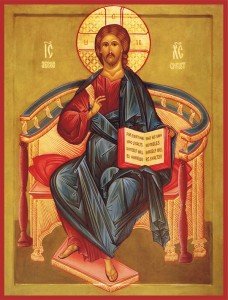 I have been considering the Gospel of John in this article. While few verbal parallels are found between John’s gospel and the three Synoptics, the few that exist could be accounted for if both John and the synoptic authors knew some of the same oral tradition. But whether or not John knew any of the other gospels, he went his own way. His gospel is very different. The true difference between John’s gospel and the synoptics was already recognized in Christian antiquity. Around the year 200, an early Christian named Clement of Alexandria described it as a spiritual gospel. He was probably not the first to notice, but the first whose comments have survived. Exactly what Clement meant, beyond naming a difference, is not clear. The most obvious meaning is that John’s story, that is his language, is more symbolic than literal and factual. Such is also the conclusion of mainstream modern, biblical scholarship.
I have been considering the Gospel of John in this article. While few verbal parallels are found between John’s gospel and the three Synoptics, the few that exist could be accounted for if both John and the synoptic authors knew some of the same oral tradition. But whether or not John knew any of the other gospels, he went his own way. His gospel is very different. The true difference between John’s gospel and the synoptics was already recognized in Christian antiquity. Around the year 200, an early Christian named Clement of Alexandria described it as a spiritual gospel. He was probably not the first to notice, but the first whose comments have survived. Exactly what Clement meant, beyond naming a difference, is not clear. The most obvious meaning is that John’s story, that is his language, is more symbolic than literal and factual. Such is also the conclusion of mainstream modern, biblical scholarship.
Some who think of history as the facts, as what happened, dismiss John because his story is not presented as straightforwardly factual. They are right to regard John as less historical in this sense. But to dismiss or set John aside would be a mistake. John is a remarkable testimony to what Jesus had become in the early Christian milieu in which the gospel was written. Its language is rich and powerful and it has shaped Christianity ever since.
Mainline scholars commonly date John around the year 90. John, however, has earlier and later layers. The clearest example is that the gospel seems to end twice – once at the end of chapter 20 and again at the end of chapter 21. The most plausible explanation is that John 21 was added to a first edition that ended with John 20. Scholars have also argued that the author may have had second thoughts about what he wanted to share. Despite uncertainty about what might be earlier and what is likely later, there is a strong consensus that the form in which we have John came from the decade of the 90s. It tells us how Jesus was spoken of in a Christian community near the end of the first century. It does not tell us very much about how Jesus himself spoke.
The narrative has been organized and adapted to serve the evangelist’s theological purposes. In the next installment I shall share what some scholars identify as the theological purposes of John’s Gospel.
Hopefully this prepares us for Easter!
